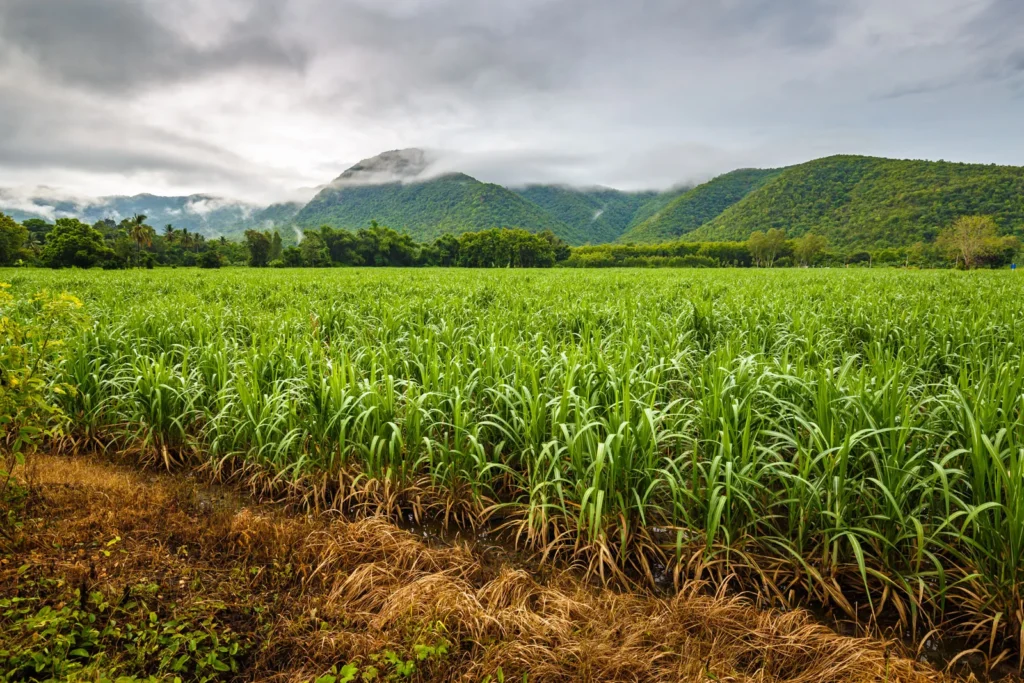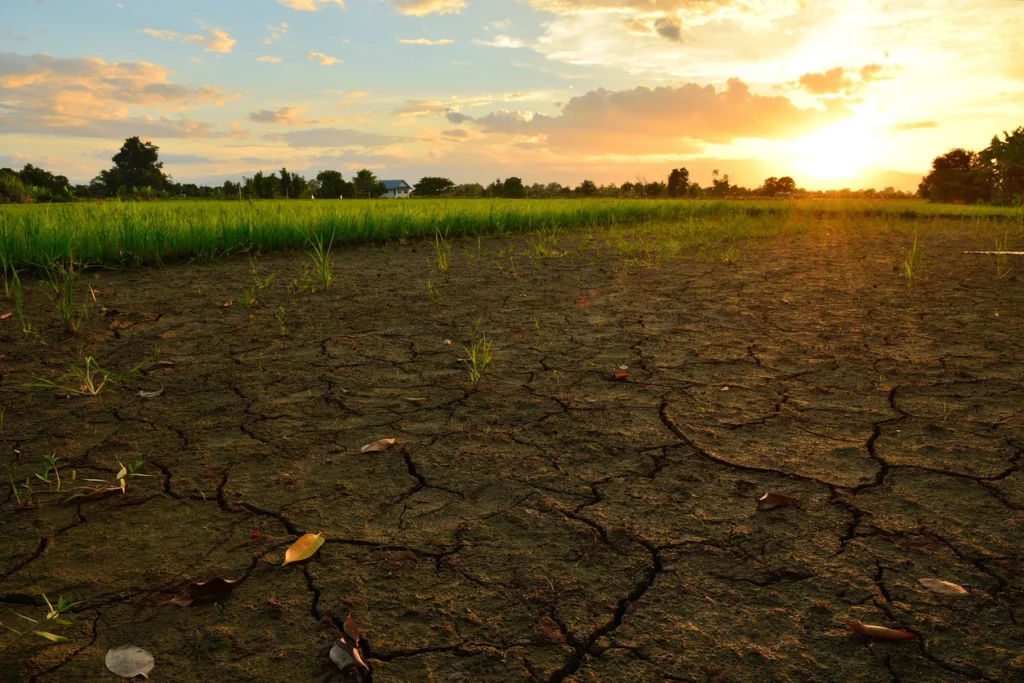Sugarcane farming holds significant economic importance in Maharashtra, contributing substantially to the state’s agricultural output. Over the years, Maharashtra has emerged as one of the leading sugarcane producers in India, deeply interwoven with the region’s cultural and economic fabric. What are the key challenges our farmers are facing here?

Traditional Practices v/s Demand
Traditionally, sugarcane farming practices in Maharashtra have revolved around manual labour, with farmers employing age-old techniques passed down through generations. These methods have included the use of traditional irrigation systems and cropping patterns that maximised yield while minimising dependency on chemical fertilizers and pesticides.
However, the increasing demand for sugar and the emergence of modern agricultural technologies have prompted a shift towards more mechanized and efficient farming practices. These contemporary approaches encompass precision agriculture, improved seed varieties, and enhanced water management strategies, aiming to increase productivity and sustainability.
Current trends in sugarcane production highlight a growing awareness of environmental challenges and socio-economic factors impacting farming practices. Farmers are increasingly adopting integrated pest management and organic farming techniques, driven by the need to reduce chemical usage and promote sustainable practices. Additionally, the introduction of government initiatives and subsidies aimed at supporting sugarcane cultivation has provided a crucial boost to farmers, ensuring better accessibility to resources and modern technology.
As sugarcane farming evolves in Maharashtra, the confluence of traditional practices and modern innovations presents both challenges and opportunities for the industry. Understanding these dynamics is vital for comprehending the broader context of sugarcane production, which ultimately influences the economic stability of the region and the well-being of its farmers.
Key Challenges Faced by Farmers
Sugarcane production is a vital agricultural activity in Maharashtra, contributing significantly to the state’s economy. However, farmers encounter numerous challenges that can hinder this crucial industry. One of the primary issues is the lack of adequate irrigation water. Many regions in Maharashtra experience irregular rainfall patterns, leading to water scarcity. This deficiency necessitates farmers to rely on alternative irrigation methods, which can be both expensive and labour-intensive, thereby impacting overall yields.
Another concern is the non-availability of improved sugarcane varieties. While several hybrid and improved varieties have been developed, their accessibility remains limited for many farmers. This lack of availability can impede efforts to enhance production efficiency and crop resilience against climate-related stresses.
Furthermore, the processes involved in land preparation pose significant difficulties. Farmers often face challenges due to poor soil health, inadequate mechanisation, and limited access to agronomic expertise, which can delay planting and reduce productivity.
Additionally, high input costs represent a major barrier for sugarcane farmers. The expenses related to fertilizers, pesticides, and labour can be overwhelming, especially for small-scale farmers.
The situation is exacerbated by pest and disease management challenges. Farmers often struggle to control common pests and diseases affecting sugarcane, which can diminish crop quality and yield.
Furthermore, weed management remains a persistent challenge, requiring substantial labour and resources to ensure crop health and maximise production.
Finally, marketing problems play a significant role in the overall profitability of sugarcane farming. Farmers often face issues related to price volatility, lack of market access, and unfavourable trade conditions. These challenges can complicate their ability to secure fair prices for their produce, leading to financial instability.
Addressing these key challenges is essential for enhancing sugarcane production in Maharashtra and ensuring the sustainability of farming practices in the region.
The Impact of Water Scarcity on Crop Growth
Water scarcity poses a significant challenge to agricultural productivity, particularly in regions reliant on rain-fed systems.
In Maharashtra, June marked a critical period for sugarcane production, where the monsoon’s inadequate rainfall created distressing conditions for crop growth.

Sugarcane, being a water-intensive crop, depends heavily on consistent water supply for optimal development and yield. The mismatch between water availability and the crop’s physiological requirements not only hampers growth but also jeopardises the economic viability of the farmers involved.
With the onset of the monsoon, farmers typically anticipate increased water levels in their fields to support the initial growth phases of sugarcane. However, when rainfall is below average, the lack of moisture severely affects germination rates and ultimately leads to stunted growth. The implications of this scenario extend beyond the individual farm level, potentially affecting local economies that benefit from the sugar industry. Irrigation challenges exacerbate the situation, as many farmers struggle to access alternative water sources or to afford the costs associated with supplemental irrigation.
Farmers are often compelled to respond reactively to water scarcity. During this difficult period, many resorted to various mitigation measures, including adopting water-saving technologies or altering planting schedules, hoping to align better with the anticipated rainfall patterns. Unfortunately, these decisions are not without risk.
The uncertainty surrounding water resources can lead to increased stress and, for some farmers, financial distress, impacting their planning for the following season. This interplay between water scarcity and agricultural strategies emphasises the need for sustainable water management practices to strengthen sugarcane production systems against similar future challenges.
Effects of Recent Rainfall on Sugarcane Production
The recent changes in weather patterns, particularly regarding rainfall, have brought new dynamics to sugarcane production in Maharashtra. Beginning in July 2024, the region experienced a significant uptick in rainfall, which has notably benefitted the growth of sugarcane crops, especially in areas characterised by well-drained soils.
The correlation between sufficient rainfall and the health of sugarcane crops cannot be overstated; water plays a crucial role in nurturing plant roots and enhancing photosynthesis, which are vital for robust growth and high yields. With the arrival of this timely rainfall, sugarcane farmers have witnessed a transformative impact on their production levels.
Agricultural experts have observed that the influx of moisture from the rains contributes to both immediate and long-term benefits for sugarcane. Initially, the adequate water supply aids in flushing out salts accumulated in the soil, which is particularly important in regions where prolonged dry spells have led to soil degradation.
Improved soil structure and fertility, facilitated by the rains, correlate with increased crop resilience against pests and diseases. As a result, sugarcane plants can recover from previous stressors, entering a crucial recovery phase. This rejuvenation is key as the crop heads towards maturation, suggesting that farmers may see improved harvests this season.
Additionally, the rainfall has reinstated confidence among farmers who had previously faced uncertainty due to erratic weather conditions. The successful replenishment of water resources enhances not only the viability of current crops but also lays the groundwork for sustainable farming practices in future cycles.
As producers adapt to these positive environmental changes, there exists an emerging opportunity for Maharashtra’s sugarcane industry to thrive, driving both economic growth and food security in the region.
Uncertainties in Yield Estimates
Estimating sugarcane yields presents numerous challenges, particularly in regions like Maharashtra, where climatic variability and agronomic practices can significantly influence production. One of the primary factors contributing to uncertainties in yield estimates is fluctuating weather patterns. Seasonal variations—such as unexpected rainfall, temperature extremes, and drought conditions—can all play a crucial role in determining plant growth and, consequently, the final harvest volume. These environmental factors can result in discrepancies between projected and actual yields, making reliable forecasting a complex endeavor.
Another aspect that complicates yield estimation is the diversity of farming practices employed by sugarcane growers in Maharashtra. Different farming techniques, such as the choice of sugarcane variety, the application of fertilizers, and irrigation methods, contribute significantly to yield variability. With many farmers following traditional methods, inconsistencies in productivity levels can arise, complicating efforts to create accurate yield estimates at the regional and state levels.
In response to these challenges, millers and agricultural specialists are exploring advanced methods of data collection and analysis. Innovations in remote sensing technology and the use of algorithms can help to gather real-time data on crop health and development, leading to more precise yield forecasts.
Additionally, collaborative efforts between farmers and millers can enhance the sharing of localised knowledge, enabling them to arrive at clearer estimates. Regular communication and data exchange between these stakeholders can foster a more comprehensive understanding of how different practices impact yields and help to reconcile discrepancies that may arise from initial projections.
Despite the numerous challenges in estimating sugarcane yields, addressing these uncertainties presents an opportunity to improve overall production practices. By investing in technology and fostering collaboration, stakeholders in the sugarcane sector can better navigate the inherent risks and improve their forecasting methodologies.
Strategies for Overcoming Challenges
Addressing the challenges in sugarcane production requires a multifaceted approach that encompasses technological advancements, improved agricultural practices, and effective marketing strategies.
One essential strategy is the adoption of innovative irrigation techniques. Given the variable climate conditions in Maharashtra, implementing drip irrigation can significantly enhance water efficiency, ensuring that sugarcane crops receive adequate moisture without wastage. This method not only conserves water but can also lead to higher yields, especially during periods of drought.
Furthermore, the introduction of improved sugarcane varieties can play a pivotal role in mitigating production challenges. Breeding programmes focused on developing disease-resistant and high-yielding varieties are crucial. These improved strains can withstand pest pressures and adverse weather conditions, ultimately leading to increased productivity. Farmers should be encouraged to integrate these varieties into their cultivation practices to secure better harvests.
Effective pest management practices are vital for protecting sugarcane crops from infestations that can significantly reduce yield. Implementing integrated pest management (IPM) techniques, which combine biological, cultural, and chemical controls, can help farmers manage pest populations sustainably. Regular monitoring and the use of pest-resistant varieties can further bolster these efforts, providing a holistic approach to pest management in sugarcane production.
Finally, enhancing marketing strategies is crucial for ensuring the profitability of sugarcane farmers. Strengthening cooperatives and fostering direct relationships between producers and consumers can help secure better prices for sugarcane. Additionally, educating farmers about market trends and providing access to market information can empower them to make informed decisions regarding the timing of selling their produce.
Incorporating these strategies can forge a path toward overcoming the numerous challenges faced in sugarcane production, ultimately promoting sustainability and profitability within the agricultural sector of Maharashtra.
The Way Forward for Sugarcane Farmers
In conclusion, the sugarcane industry in Maharashtra faces a plethora of challenges that impact the livelihood of farmers, including fluctuating market prices, climate change, and resource constraints. These factors necessitate a collective effort to address the systemic issues confronting sugarcane production. On one hand, the inherent challenges present significant hurdles, yet they simultaneously usher in a realm of opportunities for innovation and growth within the sector. For instance, investment in research and development can yield new varieties of sugarcane that are more resilient to drought and pests, thereby enhancing crop yields and farmer income.
Moreover, the role of cooperative societies in providing a support network for farmers cannot be overstated. By pooling resources and knowledge, these organizations can empower individual farmers, helping them navigate the complexities of the sugarcane market. Additionally, promoting sustainable farming practices will not only mitigate environmental impacts but also enhance the long-term viability of sugarcane farming in Maharashtra.
The importance of resilience and adaptability in the agricultural sector is paramount; farmers must remain agile in response to market dynamics and environmental challenges.
As stakeholders in the sugarcane economy collaborate on smart policies and practices, the prospects for farmers can improve significantly. The establishment of better irrigation systems, financial incentives for sustainable practices, and access to advanced agricultural tools can create an enabling environment for farmers.
Moving forward, sustained governmental support and investment in infrastructure and technology will be crucial in fostering a vibrant sugarcane sector. Ultimately, by leveraging both challenges and opportunities, sugarcane farmers in Maharashtra can pave the way for a prosperous future, ensuring that the industry thrives for generations to come.
Are you looking for Modernising your Sugarcane Farm and improving your Yield by 2.5X? Reach out to Smartcane with a “Hi” to 76187 42991 on WhatsApp
Leave a Reply